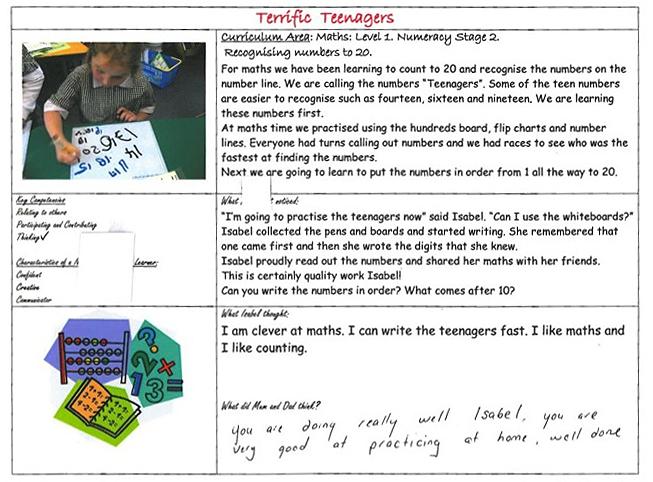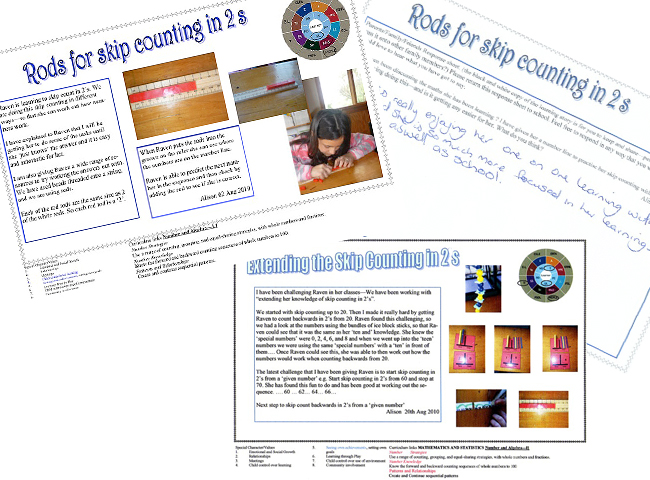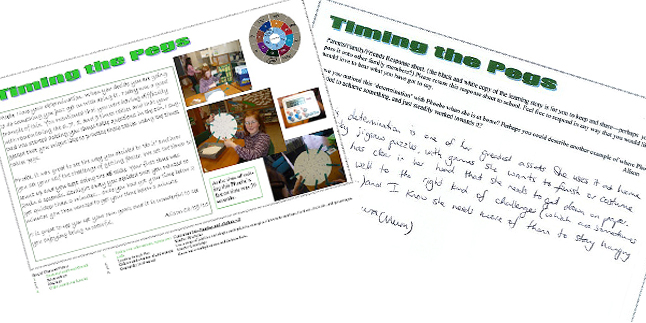This learning story describes the strategies Raven uses to support her learning.
- What has the teacher considered important to notice about Raven's learning?
- How does the teacher reflect on her own practice?
- How has the teacher helped parents and whānau notice particular features of Raven's learning?
- How might the parent's comment help guide Raven's next learning steps?
(You will find the text for the learning story beneath the image.)
Rods for skip counting in 2s
Teacher's comment:
Raven is learning to skip count in 2s. We are doing this skip counting in different ways - so that she can work out how numbers work.
I have explained to Raven that I will be getting her to do some of the tasks until she 'just knows' the answer and it is easy and automatic for her.
I am also giving Raven a wide range of resources to try working the answers out with. We have used beads threaded onto a string, and we are using rods.
Each of the red rods are the same size as 2 of the white rods. So each red rod is a '2'.
When Raven puts the rods into the groove on the ruler she can see where the numbers are on the number line.
Raven is able to predict the next number in the sequence and then check by adding the rod to see if she is correct.
Alison 2nd August 2010.
Parents/family/friends response sheet:
Has Raven been discussing the maths she has been learning? I have given her a number line to practise her skip counting with - has she been enjoying doing this - and is it getting any easier for her? What do you think? Alison
Raven is really enjoying her one on one learning with you and she is so much more focused in her learning at home as well as school.
Extending the skip counting in 2s
Teacher's comment:
I have been challenging Raven in her classes - We have been working with "extending her knowledge of skip counting in 2s".
We started with skip counting up to 20. Then I made it really hard by getting Raven to count backwards in 2s from 20. Raven found this challenging, so we had a look at the numbers using the bundles of ice block sticks, so that Raven could see that it was the same as her "ten and" knowledge. She knew the "special numbers" were 0,2,4,6, and 8 and when we went up into the "teen" numbers we were using the same "special numbers" with a "ten" in front of them ... Once Raven could see this, she was able to then work out how the numbers would work when counting backwards from 20.
The latest challenge that I have been giving Raven is to start skip counting in 2s from a "given number" for example - Start skip counting in 2s from 60 and stop at 70. She has found this fun to do and has been good at working out the sequence ... 60...62...64...66...
Next step to skip count backwards in 2s from a "given number".
Alison 20th August 2010.



